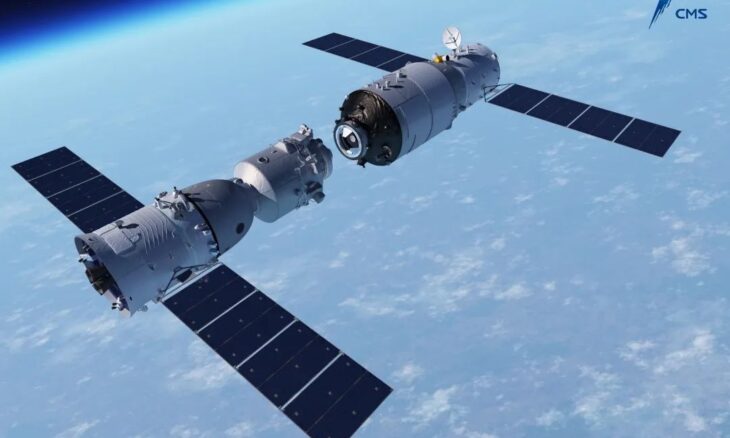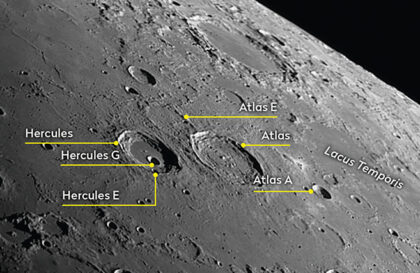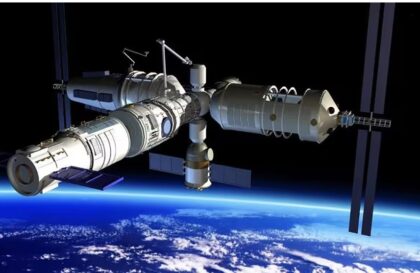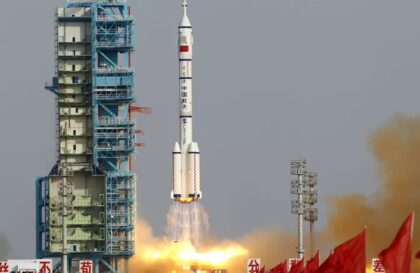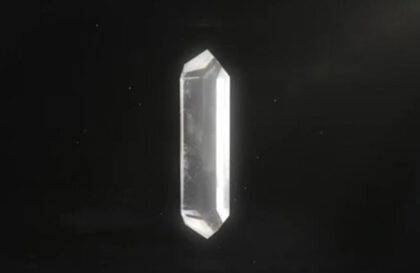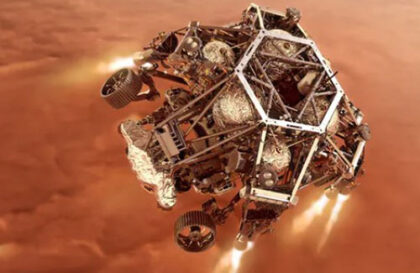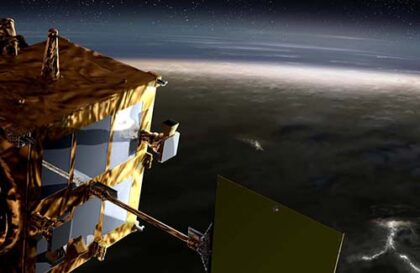China began its space program in 1956 and launched the first satellite in 1970. At the beginning of the 21st century, China grew in space power and became one of the top three space superpowers. It has a variety of launch vehicles, including heavy-lift ones, and an extensive array of satellites, including geostationary ones. China has also sent interplanetary probes to the Moon and Mars, and the total number of satellites it has launched has exceeded three hundred.
China has four spaceports: Jiuquan, Xichang, Taiyuan, and Wenchang (the southernmost).
Credit: CMS
Important stages of the space program
The launch of the Venezuelan satellite VRSS-1/Miranda using the Long March-2D launch vehicle from the Jiuquan Satellite Launch Center.
Chang’e-3 is a Chinese automatic interplanetary station for studying the Moon.
In 1976, China was the third in the world to create satellite retrieval technology.
In 2003, China became the world’s third space superpower with its manned space program.
In 2007, China was the third in the world to demonstrate its possession of anti-satellite missile technology (interception of artificial Earth satellites).
In 2007, 2013, and 2014, China became the third country with a lunar-orbital AMS, a lunar-landing AMS with a lunar rover, and an AMS with a return vehicle from lunar orbit, and in 2012, it was the fourth country in the world to study an asteroid using an AMS.
In 2011, China launched its first orbital station and made its first docking, and also became the second country in the number of space launches, surpassing the United States and second only to Russia.
In 2012, the first manned flight to the national orbital station took place in China.
In 2016, China pioneered the development of pulsar space navigation.
In 2018, China became the world leader in space launches, with 37 launches during the year.
In 2022, China became the sole owner of the national multi-module orbital station, the second in the world after the USSR. It is also a major player in the satellite launch services market and a designer of satellites commissioned by other countries, including Nigeria. China actively cooperates with various countries, including Brazil, but does not participate in the International Space Station (ISS).
A render of the Tiangong space station, showing the Mengtian module (left) after docking with the Tianhe module (right) docking hub. Credit: CMSA
China plans to provide flight opportunities for foreign astronauts on its ships and space stations, similar to the USSR/Russia and the USA. In addition, it has its own BeiDou global satellite navigation system. He is building his multi-module orbital station, conducting lunar exploration, and developing a reusable manned spacecraft and a super-heavy launch vehicle Changzheng-9.
Moon exploration
China is actively participating in the “second lunar race” and plans to create the first lunar base and organize manned flights to the Moon. Their goal is to complete this project by 2030 using the Long March 9 super-heavy launch vehicle.
China has begun exploration of the Moon with robotic missions. They launched their first artificial lunar satellite, Chang’e-1, in October 2007, becoming the third country, after the USSR and the USA, to begin independent lunar exploration. This was followed by the Chang’e 2 mission and the landing of China’s Chang’e 3 probe on the Moon in December 2013, including the Yutu rover. This made China the second country, after the USSR, to operate remote lunar rovers.
Render of a conceptual Chinese lunar base. Credit: CAST
In 2014, China successfully launched and returned the Chang’e-5T1 lander from lunar orbit, making China the third country in the world, after the USSR and the United States, to have lander technology after flying to the Moon.
Then, in 2019, China’s robotic Chang’e 4 mission with the Yutu 2 rover landed on the far side of the Moon, becoming the world’s first mission to successfully land and operate on this side of the Moon.
In 2020, the Chang’e-5 mission brought samples of lunar soil to Earth. China also became the first country to operate on the far side of the Moon using the L2 Lagrange point of the Earth-Moon system.
In 2021, China and Russia merged their lunar programs and began joint construction of the International Scientific Lunar Station.
China’s interplanetary projects
In 2012, the Chang’e-2 station studied the Tautatis asteroid from its flyby trajectory.
China has begun exploration of Mars and launched the Tianwen-1 Mars interplanetary station with the Zhurong rover in July 2020. This mission arrived in the vicinity of Mars in February 2021. His first Martian interplanetary station, Inho-1, which was supposed to become an artificial satellite of Mars, was launched and then fell into the ocean along with the Russian Phobos-Grunt spacecraft in 2011.
An artist’s illustration of China’s first Mars rover Tianwen-1 on the Red Planet. (Credit: CNSA)
In addition, in August 2021, China successfully launched a group of scientific and experimental satellites, Tianhui-2, into orbit from the Taiyuan Satellite Launch Center.
Military Program
In January 2007, China successfully shot down an old weather satellite in polar orbit at an altitude of 865 km. This was the first test of an anti-satellite weapon.
In 2013, China tested three small satellites believed to be related to the development of an anti-satellite system, including a satellite with a manipulator. During the flight, it changed its orbit by 150 km, approaching another satellite at a short distance. This manipulator can be used to capture or shoot down other satellites.
In October 2015, China successfully tested its third anti-satellite missile, the Dong Neng-3.
China is also actively developing Earth remote sensing satellites, including the Jilin-1, Gaofen 02F, Gaofen-12-03, Yaogan-35-02, and SuperView Neo satellites, as well as the Jilin-1 Gaofen satellites.
Image credit:
https://www.business-standard.com
http://wikimapia.org
https://spacenews.com
http://finance.people.com.cn
